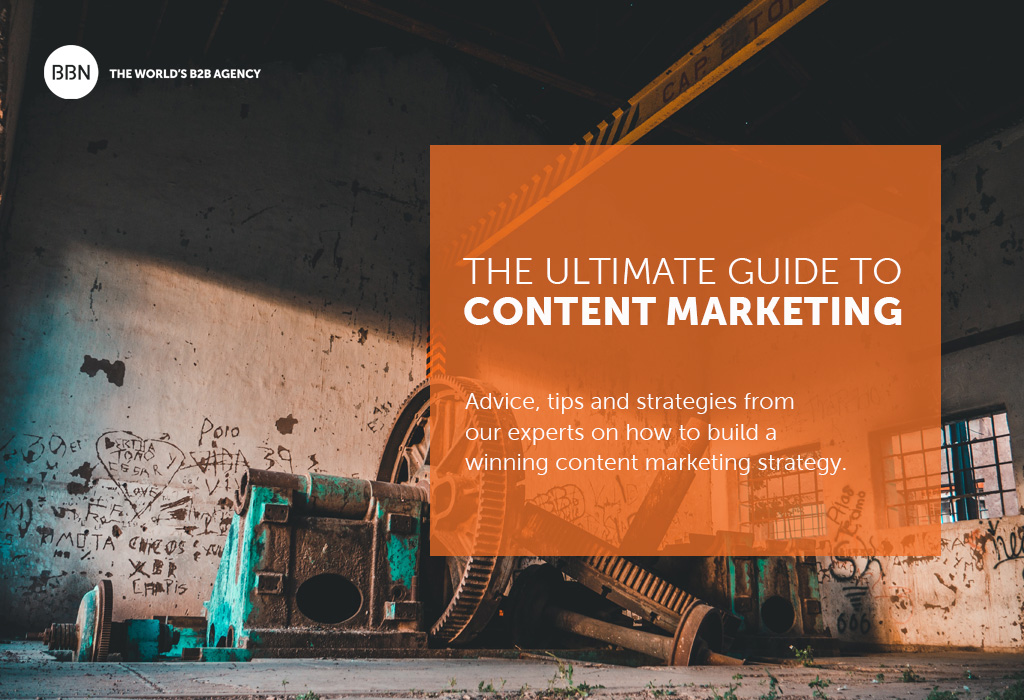What Makes Good B2B Content?
Without good content, you may have a nicely designed website that won’t hold peoples’ attention; or social media messaging that no one reads.
But what exactly is content? There’s a misconception that ‘content’ has to be something big like an article or an entire web page. The best way to think of content is everything with which your audiences interact, be it seen or heard. That includes all written materials, videos, photos, podcasts, radio ads …it’s all content. And just because it’s small doesn’t disqualify it.
Bite-Sized content works even harder. E-mail subject lines, for example. When we send out an e-mail, we send out several batches. The only thing that changes between them is the subject line. When you have space for just three or four words, you have to choose them carefully. Between the batches sent out a change in subject line raised the unique open rate by over 18%. That’s important: if our audience doesn’t click on that three-word ‘advertisement’, the whole e-mail goes unread.
Every minute, more than 33 million messages, photos and videos are posted on social media. So your content must stand out. Make sure to adopt copywriters, bloggers, designers and creative talent in your team who can lift your content to a higher level.
Tell your story
Companies are still waking up to the fact that they need good content to drive brand preference. Every organisation has a brand story to tell. When written the right way, every brand story is exciting and engaging. Inbound marketing, where you draw customers to you rather than, say, landing unsolicited in their mailbox, has brand and content at its core. Inbound tools like social media marketing, search engine optimisation, search engine marketing, videos, presentations and speaker events are powerless without great content to animate them. Whatever you do, make sure you have something interesting to say.
Now, keep in mind that people don’t read a year’s worth of Twitter posts and then devour your entire website. Most people haphazardly consume content. You have to hook them slowly while developing a relationship with them. That’s why it’s essential to reinforce the same brand story, in the same tone, across media: their impressions of your brand, your voice and your products and services need to be consistent.
You’ve heard the phrase 'Content is king', well it is! You can have stunning web design, send out copious social media messages, have a great marketing automation system, but you need excellent content to feed these tools and function the way they should.
Customer experience: Down with the silos!
Most companies have different departments: sales, marketing, customer service, IT, finance… All these departments often operate as silos, independently, using other software platforms and communicating separately to the market. From their point of view, it seems perfectly reasonable, but the customer knows only one brand or product. For him, it doesn’t matter if sales, marketing or customer services approach him. Non-matching, overlapping or even conflicting information from the same company will be experienced as odd, disturbing or confusing.
Therefore, we are increasingly using a CX (customer experience) approach, transcending the marketing level. When mapping content from a CX approach, we will automatically tune and harmonise the content that is typical for marketing, sales and customer service. Furthermore, we will also reduce the silo thinking pattern and work towards shared goals using shared platforms. This approach increases efficiency and results in a better ROI.
Take a human approach
Taking the time to understand human behaviour in the context of content marketing can go a long way. The Fogg Behavior Model, for example, states that motivation, ability, and the trigger must occur at the same time for someone to take action. Miss just one – or even simply, not enough of one – and your content won’t convert.
In Cialdini’s six principles of persuasion, social proof is defined as people doing what they observe other people doing. It’s a principle that’s based on the idea of safety in numbers. For example, the number of subscribers, famous clients and social media engagement has been shown to have a significant influence on how we interact.
This blog is an excerpt from our Content Marketing Guide, take a look to get the full low down on making content work for you.

What types of content should B2B organisations focus?
Variety is key. Much like a well-balanced diet includes foods from all of the food groups, mixing up the type of content will improve the health and longevity of your content marketing strategy.
Blogs
For businesses that think writing blogs is passé, it’s time to reconsider. Enterprise blogs are more than just content pieces. They are a means to an end, the end being generating leads. Useful blogs with rich content can convert web-traffic into measurable sales enquires.
Here’s an interesting statistic. According to research by InsideView, a market intelligence provider, B2B marketers who use blogs can generate 67 per cent more leads than those who don’t. But unfortunately, InsideView’s research also showed that only 33 per cent of B2B companies use blogs as an effective marketing tool.
E-Books
Encapsulate your message in bite-sized chunks optimised for reading on various screens and devices. Use eBooks for dense and complex information distilled into outcome-oriented, actionable insight – great for grabbing valuable mindshare and driving consideration in early stages of the buying cycle.
Explainer videos
Short, illustrated video clips to describe your product, solution or strategy. Visual explainers work great as conversation starters, solution intros, and internal comms. You can use a variety of visual styles including whiteboarding, motion graphics, iconography and character animation. Always combine visuals with high-quality voiceovers and music.
Infographics
An infographic can help you explain complex, multi-layered information for your audience to get the big picture quickly and with clarity. Whether presented as roadmaps, process flows, data visualisation or blueprints, infographics should comprise of clean design, crisp copy and web-optimised layouts.
Customer success stories
When it comes to making a purchase decision, an impressive 92% of consumers trust other people’s opinions more than advertisements.
It’s important to get customers to tell your story. People who may not have heard of your brand before will look for cues that tell them whether you’re trustworthy. Positive signals from customers are a powerful form of social proof.
Case studies are a fabulous way to show potential buyers how others have achieved success with your product. They are a compelling way to reduce uncertainty among new prospects and demonstrate your value.
According to the 2019 Content Marketing Benchmark of CMI, case studies are the number one converter for the final decision stage of the buyer’s journey.
 ← TO THE BLOG
← TO THE BLOG
